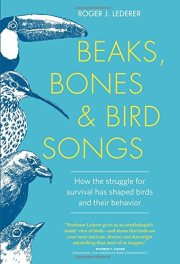Beaks, Bones and Bird Songs
 Roger J Lederer
Roger J Lederer
Timber Press
£15.00
Drawing on examples from around the world, this book is an extensive review of the adaptations for successful niche exploitation seen in birds. Much more than a catalogue of structural variations, it provides extensive and relevant biological explanations of the adaptations described.
In addition, observations are supported by references to relevant research and a full bibliography is provided.
Foraging strategies are explored, including their relation to the wide range of beak shapes and how these are adapted to function. The sensory adaptations referred to include examples of features relating to sight, sound and smell, detailing a remarkable diversity seen in birds occupying different habitats.
The biological explanations provided are factual and not deeply technical, making them accessible to those with a reasonable grasp of A level biology. The chapter on how birds have conquered the air is rather more scientific in its approach and uses examples of adaptations to support the science rather than vice versa.
Birds are shown to be good at coping with changes to weather patterns, possessing such diverse mechanisms as the toco toucan's bill, which radiates excess heat, to states of torpor in the poorwill that enable survival in fluctuating temperatures. Strategies to cope with disease or shortage of food are less common or effective. It explores the influence of humans through habitat destruction, climate change, alien predators, traffic and bright lights, and describes birds' various coping strategies.
Professor Lederer sees birdwatching as the ultimate key to the survival of birds. Birdwatchers invest significant sums of money in their hobby and provide an important link in understanding the connections between human and avian environments that will make it easier to protect birds in the future.
Dr Alan Woollhead


